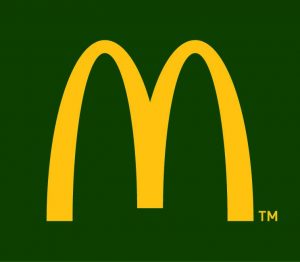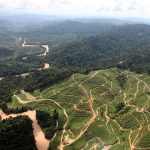The discussion around “green” products/companies and greenwashing is still very prominent, since in the last years the amount of green products has increased dramatically. In fact according to Underwriters Laboratories (UL) report “The Sins of Greenwashing Home and Family Edition 2010“ the offer of “green” products rose by 73% form 2009 to 2010. Nevertheless, the question occurs, if all this products are really more ecologically friendly or only greenwashed. As we had such an interesting, lively conversation about greenwashing in class, I thought I had to contribute one of my blog posts to this topic.
From my point of view a very critical point in this conversation is TRUST (consumer trust). Traditionally leading companies communicated the environmental impact of a product through using a third- party eco- label and certifications. However, since the massive rise in “green” products, people are not as easily convinced of a product being green (as the class discussion showed). In addition UL states, that there was an increase of worshiping false labels as one of their 7 sins of greenwashing.
Moreover the reading material and the class discussion made me think about, whether I already experienced greenwhasing or had the feeling of a company doing so. And immediately one company came to my mind McDonald’s.
 Why you might ask? One main reason is that a couple of years ago McDonald’s changed their background colour of their logo from red to dark green in many European countries. Many consumers including myself were very confused, since McDonald’s missed to effectively advertise their green actions, to verify their new green logo. Therefore critic and greenwashing accusations arise quickly. Additionally many products of McDonald’s relay on beef meet, which contributes to green house gas emissions more than most people think. In reference to the documentary “Before the flood” the scientist Dr. Gidon Eshel mentioned that one main reason of rainforest deforestation is the need of new feedingstuff production area. In the US 70% of 47% of the land use is due to feedingstuff cultivation. As a matter of fact 10-12% of US emissions are caused by beef production. One reason is the production of methane by cows. One methane molecule is as impactful as 23 Co2 molecules.
Why you might ask? One main reason is that a couple of years ago McDonald’s changed their background colour of their logo from red to dark green in many European countries. Many consumers including myself were very confused, since McDonald’s missed to effectively advertise their green actions, to verify their new green logo. Therefore critic and greenwashing accusations arise quickly. Additionally many products of McDonald’s relay on beef meet, which contributes to green house gas emissions more than most people think. In reference to the documentary “Before the flood” the scientist Dr. Gidon Eshel mentioned that one main reason of rainforest deforestation is the need of new feedingstuff production area. In the US 70% of 47% of the land use is due to feedingstuff cultivation. As a matter of fact 10-12% of US emissions are caused by beef production. One reason is the production of methane by cows. One methane molecule is as impactful as 23 Co2 molecules.
So what can McDonald’s do be credible? The report “Eco-promising: communicating the environmental credentials of your products and services” written by the business for social responsibility offers some interesting solutions as, know your products’ biggest impact, be transparent and much more.
Actually McDonals’s are tackling some of these points by writing the global beef sustainability report (and many more sustainability reports).




LucyStephenson
March 28, 2017 — 9:45 am
I’m also from Europe and did not notice the change in the background of the McDonalds sign. I haven’t noticed any changes in people’s behaviours toward a more sustainable attitude in Germany or the UK, which could be why McDonalds is making a stance for a more environmentally friendly image? Could it be that the company detected a shift in attitudes elsewhere (North America..) and is able to tackle this and be a leader toward this changing lifestyle and changing diet?